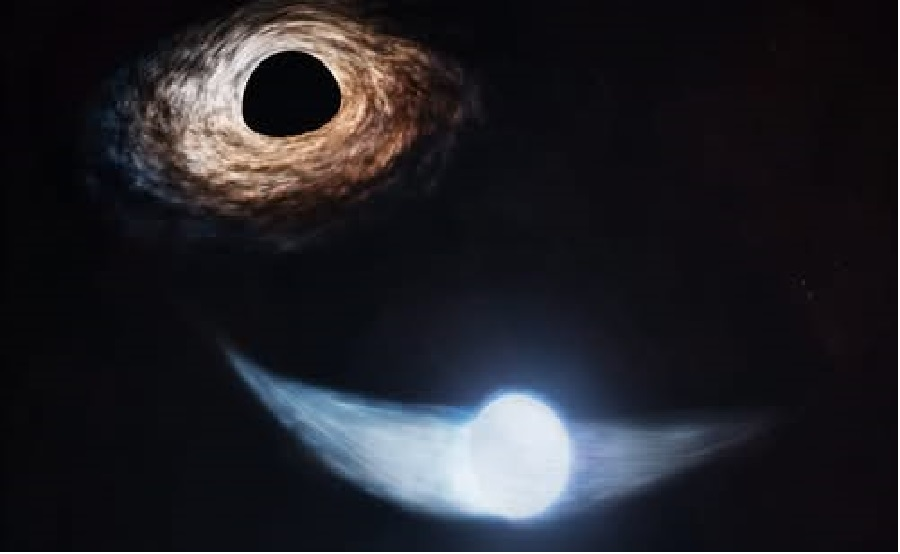
“NASA Captures Mysterious Eruption Escaping a Black Hole at Near-Light Speed (Video)”
Black holes are known for their intense gravitational pull, trapping everything that crosses their event horizon—including light itself. However, NASA recently recorded an astonishing event: something escaping a black hole at nearly the speed of light. This groundbreaking observation challenges our understanding of black holes and provides new insights into the extreme physics governing these cosmic giants.
What Did NASA Observe?
Using data from NASA’s Chandra X-ray Observatory, scientists observed a powerful burst of material ejected from a supermassive black hole located in a distant galaxy. This high-speed outflow, moving at nearly the speed of light, is what astronomers call a relativistic jet—a phenomenon seen in some black holes actively feeding on surrounding matter.
The black hole in question is part of a galaxy roughly 800 million light-years from Earth. As it devours nearby material, some of the infalling matter doesn’t get swallowed but instead is channeled into highly energetic jets blasting outward at relativistic speeds.
Can Anything Escape a Black Hole?
At first glance, it seems impossible for anything to escape a black hole. However, what NASA recorded does not defy physics. The material observed escaping wasn’t coming from inside the event horizon—the point of no return—but rather from the accretion disk, a swirling ring of hot gas and matter spiraling around the black hole.
In some cases, magnetic fields near the black hole become so intense that they can redirect part of this inflowing material away from the event horizon, launching it outward in the form of jets of plasma. These jets travel at nearly the speed of light and extend for thousands of light-years into space.
The Power of Relativistic Jets
Relativistic jets are among the most energetic and mysterious phenomena in astrophysics. These powerful beams of plasma are:
- Driven by Magnetic Fields: The intense magnetic fields near a black hole’s spinning disk help accelerate particles to near-light speeds.
- Capable of Outshining Entire Galaxies: The energy released in these jets can be so immense that they become brighter than the combined light of all the stars in their host galaxy.
- Key to Understanding Galaxy Evolution: These jets can influence the formation of stars and regulate the growth of galaxies by expelling material into intergalactic space.
NASA’s Video of the Event
NASA’s Chandra X-ray Observatory captured the event using X-ray imaging, revealing an ultra-fast jet escaping from the vicinity of the black hole. The video shows how the jet’s brightness and structure evolved over time, offering a rare glimpse into the violent environment around a black hole.
Scientists are now analyzing this data to better understand how these jets form and what role they play in the larger cosmic ecosystem.
What Does This Discovery Mean?
This observation reinforces several key ideas about black holes:
- Black Holes Are Not Just Cosmic Vacuums: They don’t simply consume everything—under certain conditions, they can eject material with incredible force.
- Magnetic Fields Play a Crucial Role: The ability of black holes to launch relativistic jets depends heavily on their surrounding magnetic fields.
- Extreme Physics at Play: Studying these jets allows scientists to test the limits of Einstein’s theory of relativity and better understand how black holes interact with their surroundings.
Looking Ahead
With future telescopes like the James Webb Space Telescope (JWST) and next-generation X-ray observatories, scientists hope to capture even more detailed images of these cosmic outflows. Understanding how black holes expel matter could provide deeper insights into galaxy formation, dark matter interactions, and the very structure of the universe.
This incredible event captured by NASA proves that black holes are far more complex than once thought, and they continue to challenge our understanding of space, time, and the very nature of reality itself.

